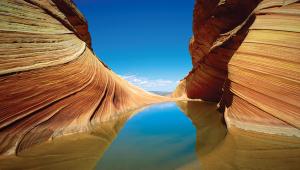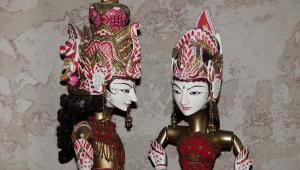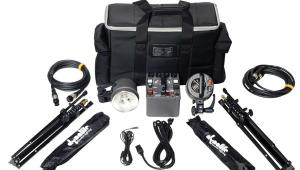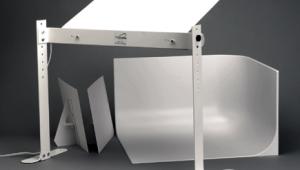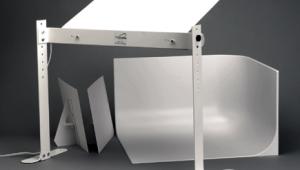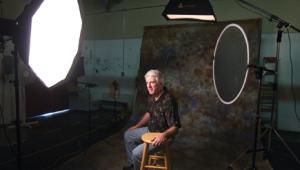Lesson Of The Month
Creating Cinematic Lighting The Easy Way
Basic Methods For Working With The Sun
Anyone who's ever been
on a movie set is sure to have a sense of just how involved the lighting
setups can be. Because shooting for film is very involved, expensive,
and takes up a lot of time, production teams need to be able to create
their own lighting setups so as not to be at the mercy of the weather
or direction of the sun. On most sets, huge, generator-powered lights
are used to simulate sunlight, while other large-scale light diffusers
and reflectors are used to control the quality of the light that illuminates
the subject or scene. |
|||
I was recently in Boston visiting some friends and wanted to take some outside portraits of my friend Liz in the north end of the city. As we were scouting a place to shoot near in the north end, I noticed a small side street lined with tall buildings where the afternoon sun was just about to shine in. So we decided to quickly set up some lighting gear to take advantage of this momentary lighting opportunity. Head And Shoulders
Portrait |
|||
Since Liz's face would
be dark in shadow in this position, I attached a 32" MultiDisc to
a LiteDisc Holder and LiteStand and positioned it so that the white side
of the reflector would bounce sunlight into the top half of her body (#1).
|
|||
Since I wanted a short depth
of field, I set the aperture to f/3.5 and the shutter speed to 1/500 sec
to compensate for exposure. Once the camera was set, I framed up the shot
and fired off a few frames. Here is a keeper of the bunch (#2). |
|||
While the white side of the
MultiDisc is good for bouncing soft light into the shadows, it is also
neutral in tone. Sometimes it's nice to use the soft gold side to
warm up the skin tones somewhat, and that's what I decided to do
here next (#3). To do so, I simply flipped the fabric on the MultiDisc,
reattached it to the LiteDisc Holder, checked the reflection in Liz's
face and took a few more exposures. |
|||
Full-Length Portrait |
|||
Once everything was in position, I asked Liz for a few different poses and fired off a few more shots (#5 and #6). |
|||
The result shows a bright, even light that fills in the shadows from head to toe (#7). Even the black pants are illuminated enough to reveal texture and detail. As you can see, the white LitePanel fabric helps to create natural-looking lighting without appearing as though the scene is artificially lit. |
|||
Next, we decided to flip the LitePanel to reflect the soft gold side of the fabric. Again, the soft gold side is both brighter and warmer in tone than the white side, and gives us a different look to the shot. Once the LitePanel was in place, I took a few more exposures at the same camera settings (#8). Notice the difference the soft gold panel makes. The result shows a very dramatic light that ties in well with the contrast of the building in the background (#9). A very cinematic shot lit simply by the sun and a reflector. |
|||
As the sun made its way across the sky, we decided to reposition our camera angle so that the building across the street would be in the background. While we waited for the light to rake across the brick, I had Liz put on her sunglasses and a scarf for a slightly different look. With the same camera settings and the soft gold panel in place, I took a few more shots. Here is Liz's favorite of the bunch (#10). Again, a well-lit, dimensional subject in front of a nicely textured background. It just goes to show that you don't have to spend a fortune to get professional-quality results! |
|||
If you would like to continue your digital step by step education lessons on editing, printing, and e-mailing your photos it will be on the private section of the Web Photo School. To enroll for WPS just go to www.shutterbug.com and click on WPS Free Lessons. Technical Equipment |














